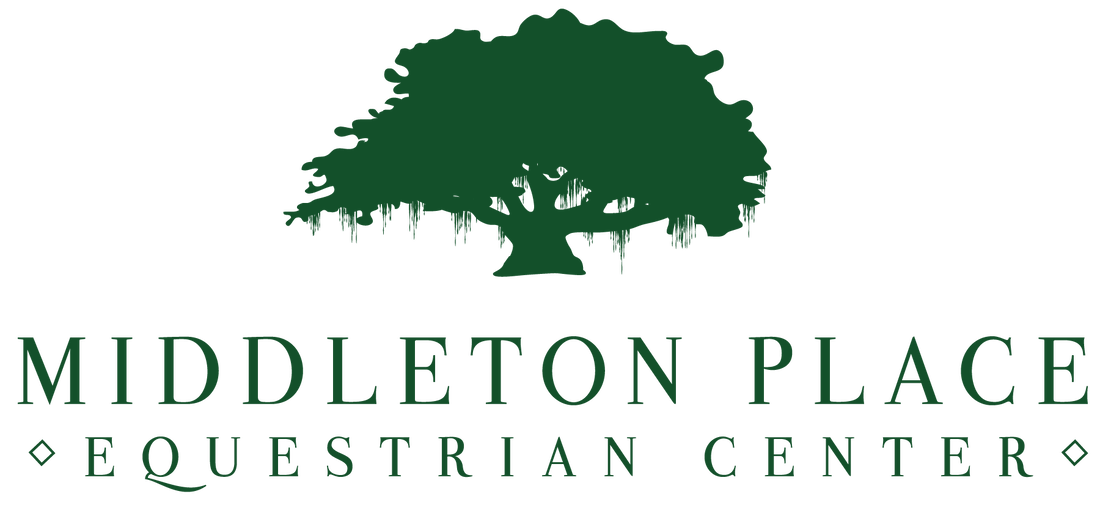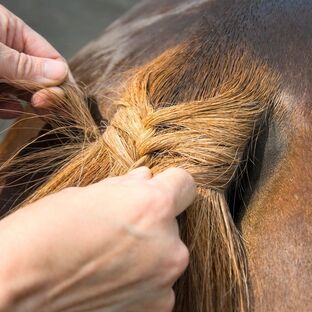 In the second part of this blog, we will be continuing our discussion on how to properly care for your horse's mane and tail. Hello, trail friends! Welcome back to the blog! We are thrilled you decided to come pay another visit to our blogs and continue to learn more about the care and maintenance that your horse's mane and tail requires. The end of October is right around the corner, so make sure you come and learn more about the history of our beautiful trails and the land we are connected to. There might even be a ghost story or two lurking in the shadows waiting to be told! Make sure to schedule your rides with us ahead of time and get ready for the best horseback riding trail in Charleston! We can't wait to see you soon! As we mentioned in our last blog, caring for your horse's mane and tail comes with a huge responsibility. This is just one of the multitude of things you need to take care of and care for when it comes to owning a single horse. We urge you to remember this when thinking about purchasing your very first horse or perhaps even your second. Every horse deserves every moment of meticulous and well-planned care as the next. We hope that you take these two blogs and every blog dedicated to the care of your horse to heart. We want both you and your horse to have an incredible life together. Please remember too that a horse is going to be a full life commitment, many of them live to be 20 years of age if not older. They will need your constant love, support, and care for every single one of those years! So, let's hop back into the barn and talk more about the care and maintenance of our beautiful horse's manes and tails!
Keeping your horse healthy, clean, and looking gorgeous is a multi-staged approach. It does take time and dedication that every horse deserves. Just caring for their mains and tails is complex, don't forget about every other aspect of caring for them too! This needs to be considered when you are thinking about buying a horse of your own, can you handle this kind of responsibility? Of course, as fellow horse lovers, you know they are worth the time and care and to look and feel their best, always! We hope this how-to guide was helpful, and we look forward to seeing you on the trails very soon! If you have any questions about the care of your horse between now our next blog, don't hesitate to reach out. We are here to help you care for your horses as best as possible. Until next time, stay safe and stay hopeful everyone!
9 Comments
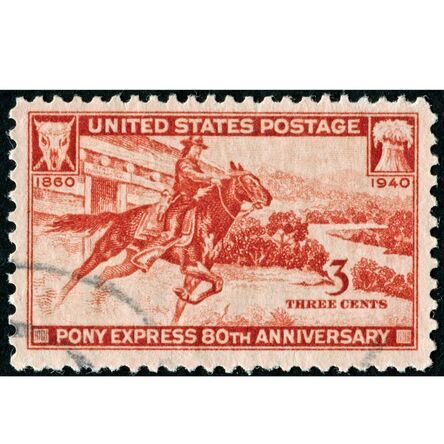 Horses have been apart of some of the most important and iconic events and moments in history. In this blog, we are going to be talking about the history of the Pony Express. Hello, everyone! We hope you've stumbled upon our blog to learn more about the best horseback riding trails in South Carolina! This weather is so perfect to be on our trials. As the weather slowly starts to turn you'll see even more beauty that the Lowcountry has to offer. Make sure to book your historic trail rides today, we can't wait to see you! We've gotten to thinking through all the historic research we've been doing for our recent blogs, and we realized that horses have been apart of some of the most important and iconic moments in the early history of the United States. Up until the early 1900s when Henry Ford made the car affordable and accessible to almost every American, the horse was right there getting us to and from everyday tasks and events, some that would forever change our everyday lives as a country. One of the most iconic events lasted a very short amount of time but has remained in history's spotlight, in our textbooks, and in our hearts ever since it ended. Today, we are going to be talking about the history of the Pony Express. The Pony Express only lasted for two years and made less than 400 runs, but it is still one of the most iconic parts of our history. Its story has lasted because of the endurance and bravery of its riders and its connection to famous people like Mark Twain and Buffalo Bill Cody. Cody was one of the Express's most famous promoters, but he never actually rode for them! He was much more of a showman. The Pony Express was born when our country was under huge changes both politically and personally. Imagine America right after the gold rush, right as Abraham Lincoln became president, and when the country was right on the brink of civil war. It was born when information needed to be delivered as quickly as possible, but a mode of transportation was not yet available. The Pony Express changed all of this. The Pony Express riders helped deliver news faster than ever before all thanks to the powerful horses that these brave riders rode. They cut down the time to carrying news from what could be a couple of months down to a few days. They did this by adding more relay stations and making use of the telegraph, according to National Geographic. Individuals could now stay in touch with their loved ones, no matter where they lived. It wasn't just private individuals that were benefiting from this new form of news delivery, newspapers and magazines relied on getting their information from the Express, too. For a total of eighteen months, the Pony Express delivered the mail faster than ever before between April 1860 and October of 1861. It helped tie the east to the west carrying some of the most important news of the time. Young men would ride what would later become the Pony Express National Historic Trail, covering eight states. It was the most direct form of communication of its time between Missouri to California. They could ride up to 1800 miles in just ten days. Millions began the move out west in the mid-1840s because of the gold rush and the Mormon exodus, according to The National Pony Express. With so many people on the other side of the country, a new form of communication was needed. In came William H. Russell, Alexander Majors, and William B. Waddell. They created The Central Overland California and Pikes Peak Express Company to deliver mail from one end of the country to the other. This would later become the Pony Express. According to the National Pony Express, shortly after the Express was created, congress authorized a bill to build a telegraph line that would run from the Missouri River to the Pacific Coast. While the line was under construction, the Pony Express delivered its letters, news, and newspapers. When the telegraph line was finally finished in 1861, the Pony Express shut down. Its last letters were delivered in November of that year. Even with its short history, it has become embedded into the history of the Wild West thanks to Wild West shows that traveled across the country and even into Europe. Ironically, these shows and the stars that made them famous (like Buffalo Bill Cody) were famous much after the Pony Express ended. It still raised public awareness about the Express and kept it alive in history. Even though it has been kept alive, a lot of the history is full of inaccuracies, wild stories, and myths according to National Geographic. Almost no records survive of this famous 18 month period. The young men who were riders for the Express would ride up to 100 miles a day and sometimes up to four times a week. They all had to follow some very strict rules like no drinking or cursing, according to National Geographic. They were facing every kind of challenge nature could put in front of them and in some of the most dangerous parts of the country. Through snowy mountain passes and dangerous deserts, they made their rides. They came into contact with Native Americans and wild animals, and all kinds of other perils. Some Pony Express riders were killed and some stations were burned down after relations between Native Americans and Americans were heated. Service even stopped in certain areas because of it, but after the stations were rebuilt, service went back to normal. Today, it continues to live on in colorful stories, reenactments, and historical locations that you can visit. Most of the original trail doesn't exist any more thanks to modern roads, construction, and time. What is believed to be left of the original trail can be seen in Utah and California. According to the National Pony Express, some 120 historic sites might soon be available to the public. What do you remember learning about the Pony Express? Have you ever visited any of its historic locations? It's incredible how much history horses helped shape and carry thanks to each ride those young men went on. Imagine how different our world would be without them! Until next time, stay safe and stay hopeful everyone! Curious about what you might find when riding on our trials or on trails of your own? Here are some important accessories you need to know about!
Happy June, everyone! Let's continue to get back in the saddle one day at a time. When joining us for your next trail ride, there might be a few needed accessories that you might not know what they are or what they do. Don't worry! We are here to help guide you. Also, everything you need for your next visit with us will be provided. We are taking very serious steps to keep our guests and employees very safe. Everything you touch and come in contact with will be very safe and clean. But as you prepare to come to visit us, we wanted to share some information about some important trail riding accessories. This information is also great for those who want to explore trails out in the wild or who might want to invest in their trail riding equipment. Don't forget, our historic trail rides are open and available to the public. You don't want to miss this beautiful and unique experience this summer! Each of the items we will be talking about today makes riding and any experience on or with a horse much more prepared, easier, and comfortable for both parties involved. They help keep the quality of the ride enjoyable and can come in handy to keep you safe and protected in any situation.
Have you seen or used some of these accessories before? Or are they all new to you? We are excited to help continue and nurture any education when it comes to our beautiful horses and everything it takes to ride them safely and properly. The trails are calling you, so what are you waiting for? Until you join us for your next ride, please continue to stay safe! We are Charleston's premier horseback riding trail, dedicated to keeping you safe while exploring the beauty of the Lowcountry. 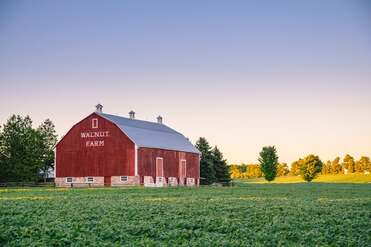 Due to the current state of things, you may or may or may not have been able to get a start on your barn's spring cleaning. Since the Lowcountry is starting to open up again, it is the perfect time to get started! Hello Lowcountry friends and fellow horse lovers! We are so excited because it looks like we will see you back in our barns and back on our trials sooner than many of us thought possible. With that becoming a reality more and more every day, we have started on our barns and stables deep cleaning and have continued to follow safety guidelines to keep our employees safe. We also want to make sure that when you come and visit us again, you'll stay healthy and safe too! Since we are digging into the deep cleaning of our barns and stables and are continuing to sanitize everything, we wanted to share some tips and suggestions on how to give your barn the best deep clean possible! If you are are a farmer or a horse owner, deep cleaning and disinfecting has always been apart of your cleaning schedule. Horses are so susceptible to bacteria and germs that are found on all surfaces in a barn and anything they can come in contact with, that it is always important to keep up with a consistent cleaning schedule. When this pandemic set in, the need to clean and sanitize was nothing new to us! Regularly disinfecting your barns and stables have always been important to help with the care and health of your horses. It has always helped with keeping your horses and employees healthy. But, with the world in the state that it is, it's more important than ever. As many of you know, this is hard work. It takes time, and a lot of extra elbow grease to do it well. But it is always worth it. When you get started, it's important to move your horses away from the area that you will be cleaning, and relocate them until you're finished. Also, it is important to remove their bedding from their stalls to maximize the deep clean. When cleaning with soap, detergent, and disinfectants of any kind, make sure that you choose based on how it could affect your farm, your animals, and yourself. Always wear the proper clothing and safety gear to keep yourself safe when using chemicals of any kind.
Like we mentioned above, keeping a barn and its horse stalls clean and disinfected takes time and serious work. But, the horse's health and the health of your employees is worth that time. Also know that when you are getting ready to head back out on our trails and to visit our horses again, a deep clean like this has always been normal for us. It is nothing new. It is something that we take very seriously. We have been and will continue to apply these ideas to helmets, saddles, and any other riding gear that is used by our guests and visitors. Remember, once we do get back to normal we offer the best horseback riding in Charleston, the best horse trail riding in Charleston, and more. During this break, take the time to visit all of the pages of our website, and enjoy learning more about Middleton trail rides! We will see you soon! 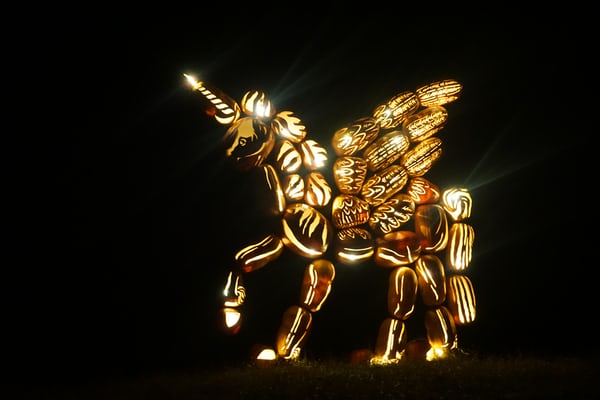 We had so much fun diving into the world of the horses we've loved in the pages of our favorite children's books, we wanted to dive in a little deeper! We are going from the pages of our favorite books to the legends of our favorite mythical horses that have been around for centuries! Hello, Lowcountry! We hope you've been enjoying this beautiful weather as much as we have! Before you know it, you'll be able to enjoy the best horseback riding trails in Charleston with us! We have been getting ready for you, and our horses can't wait to see you again. Until then, we hope you and your family continue to stay healthy and safe. Did you enjoy our last blog revisiting some of your favorite fictional horses you grew up with? We loved researching and revisiting those stories and took so much comfort from them. We loved it so much that we thought we would take this blog one step further and visit some of the most famous and mythical horses of all time. When we dove into this magical world, it proved to be very surprising. It might just put your knowledge to the test. We are excited to see how much you know and remember about these fascinating creatures. PEGASUS We couldn't begin or write a blog about mythical horses without starting or including Pegasus! This beautiful winged creature was born from the pages of Greek Mythology and was the child of Medusa and Poseidon. Pegasus has been seen in literature, art, and currency since as early as the 7th Century BCE in Corinthian culture. As the Greek myth goes, Poseidon fathered Pegasus with Medusa, and Pegasus was born when the hero Perseus slew Medusa by cutting off her head. The blood from her neck fell into the ocean, and out of the white ocean foam came Pegasus. The immortal horse received its signature bright white color from being born of the beautiful white sea foam. Poseidon gifted the horse to his son Bellerophon. Together the pair fought and won many famous mythical battles including Bellerophon's fight against the Chimaera. The two were quite a pair until similarly to Icarus, Bellerophon flew too close to the Mountain of the Gods. Pegasus threw him off his back and down to Earth. Grecian legend goes on to say that Pegasus was then gifted to Eos, and helped him pull Dawn across the sky. Others believe this is when Pegasus officially became a constellation and the servant of Zeus. He provided Zeus with all the thunder and lighting he needed. Thanks to Roman art, the history of Pegasus was immortalized which eventually lead to him becoming a symbol of immortality. To this day Pegasus appears in art, literature, cartoons, famous children's books, and movies. What has been your favorite version of Pegasus? HIPPOGRIFF This incredible mythical creature has a very interesting beginning. With the body and hindquarters of a horse and the front half of a griffin, the Hippogriff was created. Many credit this creation to Ancient Greek lore, some to Virgil, and others to the 16th-century poet Ludovico Ariosto. According to the Encyclopedia Britannica, this creature was created and written about by Ariosto, while the other's just mentioned his possibility. The Hippogriff appeared in Ariosto's poem entitled "Orlando Furioso" which was indeed credited and based on Virgil's Eclogue, according to Marianne Shapiro's "The Poetics of Ariosto". The famous poem made its the first appearance in 1516 and had multiple revisions between that date and 1532, very close to Ariosto's death. The creature is supposed to signify something impossible because it was known throughout lore that griffins and horses were mortal enemies. The Hippogriff was and still is a legendary creature that lives within Greek Folklore, and continued to grow in fame thanks to Ariosto. The creature is said to be able to fly around the world and even to the moon. It has also been very frequently depicted on the coat of arms after it's appearance in the 16th-century poem. He is also said to be a symbol of the Greek god Apollo. Today, the Hippogriff has made a very popular comeback thank's to writer J.K Rowling and her Harry Potter book series. Rowling created and introduced the character of Buckbeak the Hippogriff to the Harry Potter world and its fans. He continues to be one of the most popular characters in all of the seven books. UNICORNS Before we closed out this blog we had to touch on one of the most famous mythical horses of all time, the unicorn. This creature is depicted as a beautiful horse with a single horn coming out of its forehead. This legendary creature has been depicted in modern cartoons, books, and movies for a very long time. But, its mythical legend and how long it has been included in art, literature, and storytelling dates back thousands of years. It has been mentioned across multiple races and religions, appearing in Ancient Greek mythology, The Bible, European Folklore, Chinese mythology, and it's timeline spans from antiquity and beyond. Through each of these tellings, the Unicorn is depicted in multiple, albeit very similar, forms of appearance with multiple different and very interesting and sometimes disturbing stories of parentage. Although considered a relic of mythology, the creature was very real for many cultures and civilizations for many years. The horn, drinking from the horn, or drinking its blood has been cited to save the drinker from poison, sickness, and even death. To this day, thanks to cartoons, books, and the popularity of mythical lore, the unicorn still holds a very popular place. To many, it stands for something rare and represents fantasy. How did these facts test your knowledge of ancient lore and Greek mythology? Did we stump you or did you already know these facts and details? There were a few things we learned ourselves, and we now have a huge urge to go back and visit some of our favorite Harry Potter books and favorite childhood cartoons where these beautiful creatures live. Please continue to stay safe everyone. The longer you stay safe, the sooner we can get back to the trails! Remember, once we do get back to normal we offer the best horseback riding in Charleston, the best horse trail riding in Charleston, and more. During this break, take the time to visit all of the pages of our website, and enjoy learning more about Middleton trail rides! We will see you soon! 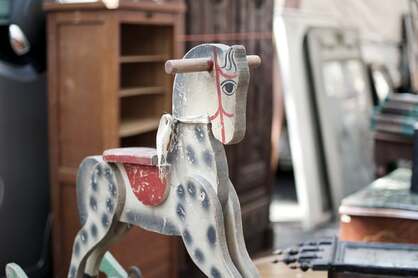 The media and the news aren't full of the best topics right now. We are right there with you when we say it's hard to read them every day. So we wanted to change things up a bit, and share some of our all-time favorite stories. During these unknown times, it has been very easy to get sucked into watching the news nonstop or scrolling through our phones for hours on end. A positive message and distraction is something that we all need right now. Which is why we picked this particular topic for our first blog of the month. To break up the multitudes of articles and blogs you've been reading about the current situation, we wanted to share one about some of the world's most famous literary horses, what their stories are, and what their history is. Sometimes, you can't always find yourself in the comfort of a saddle riding through the best horseback riding trails in Charleston. Sometimes you have to turn the pages of your favorite books, and that's alright. They will be here to keep you happy and comfortable until we can see you again! BLACK BEAUTY By Anna Sewell (1877) There are many of us out there who believed that Black Beauty was a real horse and based on a true story. Some you might still believe that today. With his amazing popularity and renown, it's hard to imagine a world without Beauty, even if he just lives in the pages of our most beloved children's book. Remember too, Beauty is the one telling the story. As much as we LOVE the idea of a real talking horse, they are still just in our storybooks. The book is credited as one of the first major animal stories in children's literature, and we all know why. Beauty himself narrates the story, as we said before, and the book is the story of his heroic life. It is the story of a well-born and well bread horse living in a world before cars and most modern technology that we know today. The amazingly brave, strong, smart and obedient Beauty is sold to a very cruel master, after his happy early years. Under the hands of this cruel master, he collapses from ill-treatment and overwork. Thankfully, Beauty recovers under a new master who loves him dearly and lives an extraordinary life after this rescue. Not only is this a beautiful story, but it was also one of the first to teach the importance of kindness towards animals and about animal welfare. Black Beauty is sited as the most famous horse story ever written and is it is still very popular to this day. It is one of the best selling books of all time, having sold over fifty million copies. There have been multiple TV shows and mini-series, movies, theatrical adaptations, and a musical recording adaptation made by Walt Disney about or inspired by Black Beauty. MISTY OF CHINCOTEAGUE By Marguerite Henry (1947) This four-part book series was written between 1947 and 1992, inspiring many others to continue the Misty legacy in their own books. Even before many of us read Black Beauty, Misty and the many books written by Marguerite Henry were the first stories about horses we read and fell in love with. The story begins in Virginia in the mid-1900s. The island the story takes place on has become home to several wild horses who came from a Spanish ship that sunk in the 1300s. The horses made their home on the beaches and became wild after being left alone for generations, and have become a staple of this story's little town. Paul and Maureen, our two main characters, want to be apart of rounding up these wild horses to sell or train as the rest of the adults do in their town, but since they are so young they have been allowed to. The famous wild horse, Phantom, has never been caught by anyone in the town and happens to be the prize Paul and Maureen have their eyes set on. Against all odds and through many trials and tribulations, they round up Phantom and her foal, Misty. Paul and Maureen finally gain Phantom and Misty's trust and allow them to be ridden. Paul trains Phantom to race and wins to the pride of their town and their grandparents. Guilty with the knowledge that Phantom wants to run free again, Paul and Maureen let her go, while Misty wishes to stay behind. This beautiful story is a coming of age book in many ways and continues to hold onto this beautiful theme through the full book series. Have you read them all? THE BLACK STALLION By Walter Farley (1979) This series of books was written for the adventurer and daydreamer alike playing make-believe while we were growing up, or for those still daydreaming today. The first book that started the adventure was about a young boy named Alec. While sailing around West Africa, Alec befriends a beautiful stallion on board. When the ship sinks, Alec saves the horse by releasing him from his stall and they swim to a nearby island. When they are finally rescued after forming a very tight bond, Alec insists that his horse be reduced too. They go to America, where after training, the stallion is now called "The Black". The horses are entered into his very first prominent race and wins, breaking a world record while doing so. This incredible book proved that nothing can get in the way of your dreams. The following books in the series are about his three children, his life beyond that of the first book, and introduces many other incredible horses along the way. Even though Black Beauty was sited as the most famous horse story ever written, the New York Times has described The Black Stallion as "the most famous fictional horse of the century." There have been three movie adaptations and one TV adaptation of the book. The first two books in the series, along with the last were all adapted into the three movie adaptations. In total, there were twenty books in the series written over more than 40 years. Some of the books were written by Walter Farley's son, Steven has also written his own Black Stallion novels, which are not included in the original 20 book series. Which one was your favorite? What is your favorite book or story about a literary horse? Is that where you came to find your love of horses for the very first time? Are the pages of these stories where you went you couldn't ride or visit your horse? Are these books ones you've shared with your family or plan to in the years to come? We hope you take comfort in their pages now, and they are getting you excited to ride with us again! When this is all over, we can't wait to take a trail ride with you on the best horseback riding trails in Charleston and in South Carolina! 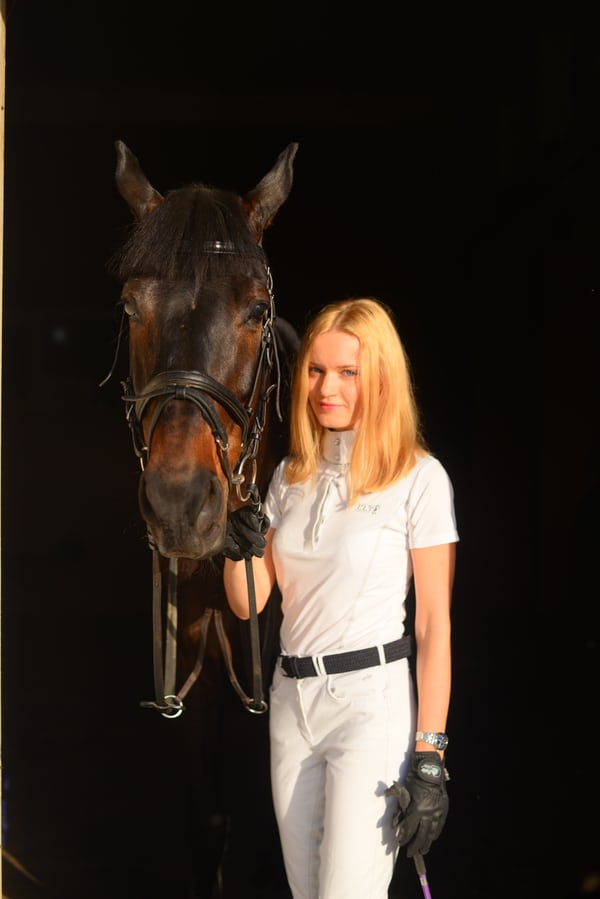 Did you know that there are multiple ways to ride a horse and different kinds of saddles to support these different ways to ride? One of the most famous and most difficult ways to ride a horse is called sidesaddle riding. It comes with an exciting and rich history that every horse lover needs to know about. Sidesaddle and the way we ride horses continues to evolve in and out of history books, to film, to being back on the filed. For some, it's coming back into popularity outside of period movies and TV shows and back into horse races and shows. But what is riding sidesaddle and what is its history? Sidesaddle riding is exactly what it sounds like. Instead of straddling the horse while riding, you posterior flat with either leg on either side of the horse, you sit sideways on the horse with both legs hanging off of the same side of the horse when riding. Many think this type of riding was just a tradition followed by women of historic royalty and high birth in the last few hundred years, but it goes way beyond that! Some historians date it back to the 6th century where the god of blacksmiths, Hephestus, has been pictured riding sidesaddle himself. This type of riding became common for women to use because riding with your legs on one side of the horse allowed women to keep their knees together at all times, which was considered to be more modest, which was important even while riding. Even though it is is much harder to ride this way, it was culturally accepted as the only way a woman could ride a horse for centuries. In the beginning, it was only men who rode horses and women were just their passengers. Women would ride behind their male counterparts, sitting on an attached cushion or blanket, being as modest as possible and keeping both of their legs together. This was also due to the fashion at the time, women wore heavy layers of skirts, and it was impossible to ride astride and maintain their modesty while doing so. Some say women started riding sidesaddle as early as 1382, and some say it was even earlier. In 1382, Princess Ann rode sidesaddle to marry King Richard II. This style of riding was considered the only way to properly preserve a woman's virginity, so from there on out it was the only way for a woman to ride. Ironically it wasn't until the middle ages that the idea and concept for a specially made saddle for this proper type of riding was even considered. This new saddle would offer support, comfort, and allow them to control and guide their horse better than ever before, and be able to ride without a man. As the years went on, many saddles were created and invented to help a woman ride more comfortably, but in 1830 with the addition of an additional pummel, the tables turned for women riders. This provided the most security and freedom in their movements than ever before, allowing them to freely gallop, ride for longer periods, and even jump if they wished. They could now hunt, race, and keep up with their male counterparts while still being in control of their modesty. But what about the lower social classes? Of course, they rode out of necessity, but as a form of physical activity and fun and appropriate behavior, it was only acceptable for women of the wealthiest class to ride until as late as the 1850's. It took almost until the 1880's for a specific riding outfit to be designed and considered for a woman to ride in. Up until that point, a woman was wearing her normal day wear, which if too long, could prove to be very dangerous for the rider. This fashion quickly changed and by the early 20th century women could wear pants to ride. With this change in fashion and with the rise of the Suffergets side saddle riding slowly began to decrease in popularity. By the time the 1930's arrived, women were finally riding like their male counterparts after almost 550 years. Today, thanks to the rise in popularity of British TV shows like Downton Abby, the return of sidesaddle riding has come. These vintage lovers are riding again in competition, races, horse shows, and for fun. They are not only bringing back the style of riding, but they are also bringing back the classic period style of dressing along with it too. Some men throughout history did ride sidesaddle, even though it was considered a woman's sport. If they had lost a leg or had other injuries, riding sidesaddle was easier for them. Riding sidesaddle was used when riding camels, zebras, mules, ostriches, and other exotic animals. Of course, some women refused to ride this way. They claimed that they were still very much proper women regardless of riding astride, Catherine The Great being one of these ladies. Also, if they were going to be riding long distances, sidesaddle was deemed impossible. The next time you are looking for the best horseback riding in Charleston and you find our beautiful paths and stables, will you want to ask about riding sidesaddle? Would you be brave enough to try it? It will give you a whole new perspective on riding, and we guarantee that it will provide quite the adventure. Come see us soon, we can't wait to ride with you! 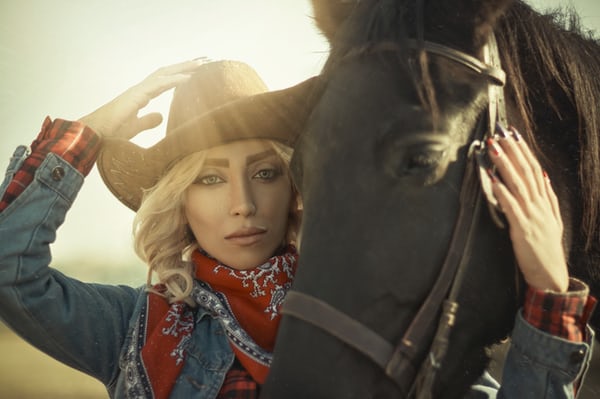 Many of us dream of being in the limelight one way or another. Who could have ever thought that horses share that same interest? Or that a horse could help bring their owners into the limelight with their incredible talents and beauty? Here is a little story behind some of the most famous horses and their equally famous owners. Famous people come to the Lowcountry every day. You can walk down King Street in the summertime and spot a star or two, or while you're sitting at your favorite restaurant in town someone famous could be sitting at the table next to yours. With our beautiful beaches, excellent food, amazing horse riding facilities, and perfect weather, Charleston offers the best of the best. More films and TV shows are being filmed in Charleston every year too, and stars of the silver and smaller screens are becoming a permanent fixture in our beautiful city. Beyond the stars that call Charleston their home or their favorite vacation spot, can you name any horse who has become famous on the big screen? Can you name a famous fixture in history who was known to be an amazing horseman or woman? You might be surprised to know there are many in both categories. Many modern celebrities love their horses or fall madly in love with them while working with them on set, but this list offers a little more than just that! Roy Rogers Many think of this handsome horseman as a TV and movie star. Which is 100% correct! Trigger, a stunning Palimino, was hist faithful horse and companion. To this day Trigger has become one of the most famous horses in film history, and Mr. Rogers was not too far behind him. Trigger stood at 15.3 hands tall, and was born on July 4th, 1943 and died on July 3rd, 1965. A child growing up during Trigger's lifetime knew who he was and that he was a cowboy's best friend. This beautiful horse used his fame to inspire so many, and never let stairs or elevators get in the way of a hospital or shelter visit. When he was born, his name was Golden Cloud. He was sold to the Hudkins Stables of Hollywood when he was three years old. This particular stable supplied horses exclusively for the TV and film industry. He appeared in his first film, "The Adventures of Robin Hood", and was ridden by the incredible Olivia de Haviland in 1938. Around the same time, a very handsome young cowboy who loved the movies changed his name from Leonard Slye to Roy Rogers. He chose the name so he could sound a little bit more like the cowboy he was. A real cowboy, now staring in his film, needed the perfect horse. That perfect horse was Golden Cloud. Rogers knew he was his match from the very first moment he rode him. Trigger earned his new name when a fellow actor of Rogers' noticed how quick he was, similar to Rogers' quick draw with a gun. So, he suggested the name, and it stuck. When their first movie together, "Under The Western Stars" made its premiere, one of the most important duos of all time was born. Knowing Trigger's popularity would continue to soar, Rogers couldn't bear the thought of someone else riding him or taking him away. So, he jumped into action and bought Trigger for his own for $2500, a mighty big sum at the time. Rogers paid in installments, and it was one of the best decisions he ever made. The duo soared to success, making one another more famous than they could have imagined. Trigger appeared in all 88 movies Rogers was in and in all 100 episodes of the Roy Rogers show and was a part of Roger's life until he died. He couldn't bear to see him buried, so he was taxidermied and was on display at multiple museums until the early 2000's when the last museum he appeared at shut down. Queen Elizabeth and Burmese The Royal family has been known for their deep love and appreciation of horses for generations. Queen Elizabeth has been one of the most prominent members of the Royal Family who has always loved and dedicated a large part of her life and time to her horses. Thanks to historical TV shows like "The Crown" we have gotten a front-row view of her love of horses and the passion she's had them from the time she was a very little girl. She had her very first pony at the age of three and is still known to ride today at the age of 92. To this day the royal family breeds some of the best horses in the UK, their horses winning almost every race in most recent history. From a very young age, Queen Elizabeth has owned and loved many spectacular horses. The standout of these beauties being Burmese, a stunning black mare that was gifted to her by the Royal Canadian Mounted Police in 1969. For 18 years, the Queen rode Burmese in the Troping The Color Parade, a parade given in special honor of her birthday. She rode Burmese next to President Ronald Reagan, and she was also riding Burmese when in 1981, 6 blank shots were fired at her during her birthday parade. The stunning horse stood strong for her beloved Queen, who recovered almost instantly and continued riding with her head held high. Burmese was retired in 1986 and put out to pasture at Windsor Castle until her death in 1990. She is buried on the grounds of the castle, which is an extreme honor and a very unique one. The Queen had a statue commissioned in honor of Burmese's life, and today it stands in front of the Saskatchewan Legislature Building in Regina, Canada. This was the providence that Burmese was born. In the UK's history, the Queen has been ranked as one of the top horse breeders. She has also been ranked as one of the highest-profile horseback riding devotees in the world. Burmese was born in 1962 and was trained by corporal Fred Rasmussen. The Queen rode her daily when she was staying at her country house, not just during her birthday parades. She was a stunning sight to see when she was being ridden and is still remembered as one of the most beautiful horses in royal history. Mr. Ed We can't talk about famous horses without mentioning Mr. Ed, of course! This popular children's show stole the hearts of the nation and Mr. Ed was at the center of that love. The TV show focused around the friendship between Wilbur Post (played by Alan Young) and Mr. Ed, his talking horse (voiced by Alan Lane). Mr. Ed was named Bamboo Harvester off the big screen and was a stunning Palomino. The majority of the show is about Mr. Ed offering his best friend, Wilbert, advice on life. More often than not, he got Wilbur in trouble because Mr. Ed would only talk to Wilbur and no one else. The show was popular around the world, and long after it went off the air in 1966. The show aired from 1961 to 1966, and believe it or not, no one wanted to pick up the show at first. It took a year of private backing before it was picked up, but once it was the show was a smashing hit. Bamboo Harvester was born in 1949 and was trained by Les Hilton. Hilton was able to teach him to move his lips every time his hoof was touched. Peanut butter could also be used to get his lips moving so it looked like he was talking. Bamboo Harvester died in 1971 after an incredible life and career. No one knows exactly how he died, many stories are floating around Hollywood about it. The most probable story of them all is that he died from heart failure. A little known fact about the show, one of the most famous film cowboys of all time, Clint Eastwood, was on the show too! There you have it! Some of the most popular horses and their celebrity counterparts of all time. Historically hundreds of horses could be added to this list. Horses have been used from the dawning of time to help conquer, protect, and build civilizations. They have journeyed from building the world to creating a world on the big screen. Who is your favorite TV or Film horse of all time? You never know, the next time you come take a ride at Middleton Equestrian Center, you might be riding the next big star Charleston will ever see! 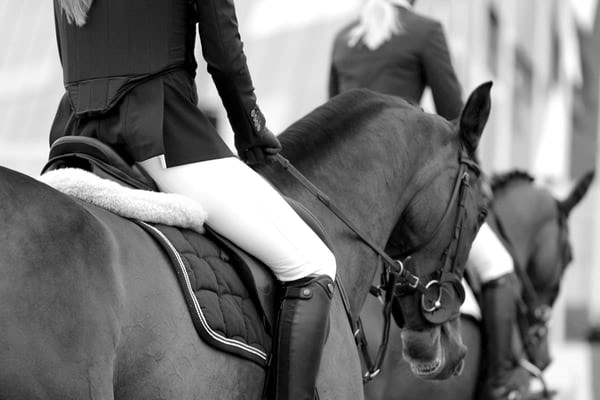 We are going to take a break from the subjects our last few blogs focused on, and visit one of the most unique and interesting traditions celebrated by horse lovers and traditional English hunters alike here in the Southeast! Traditions are a beautiful thing and something we are all very proud of here in the Southeast. We have some of the oldest and most special traditions to be found. Being horse people, we, of course, love to celebrate traditions that include our favorite beautiful animals. In this blog, we will be celebrating and discussing The Blessing Of the Hounds, the opening meeting of the Moore County Hounds, which is the oldest Fox Hunting Clubs in North Carolina. Every year on Thanksgiving Morning, excited riders, onlookers, horses, and hounds gather in Buchanan Field in Southern Pines, North Carolina. For many families, it has become a tradition that starts their Thanksgiving holiday. The tradition has been going on for more than 100 years and has continued to grow in numbers as the years have passed. Members of the Moore County Hounds appear and come dressed in formal hunters attire, atop their beautiful horses. Formal hunters attire is the classic and signature red hunting jackets called "Pinks", white riding pants, black leather riding boots, and hunt caps. The riders gather early in the morning, and before the hounds are released to follow the fox scent placed along the hunting trail (it is a mock fox hunt, no animals are hurt!), they all receive a blessing from the local Episcopal Priest while the hundreds of onlookers watch from the sidelines. The tradition and its blessing go way back to very early medieval times when hunters believed that Saint Hubert of Liege, the patron saint of hunters, would protect them and their hounds and keep them safe during the hunt. As we mentioned above, this tradition is no longer just for the riders and the horses. It has expanded and has become a huge traditional gathering and tailgating event for hundreds of spectators that attend the event every year. Many families have been apart of it for generations. Every year, 150 riders and horses are a part of the hunt. The spectators start arriving before 8 AM to claim their perfect tailgating spot, to start cooking, and to pop the bubbly for their morning mimosas. To get the best tailgating spots today, you will have to pay a pretty penny to reserve it. The official blessing begins at 10 AM and right after the ceremony, about 60 hounds are released on the trail. The whole event takes about an hour or so and is full of excitement. The equestrian community has always been strong in Moore County and Southern Pines, but it continues to be nurtured and flourishes and thrives with traditions like The Blessing of the Hounds. This celebration is proof of the immense support of the community and how loved it is by all. The club continues to care for the tradition, the riders, and animals alike. A tradition like this keeps the community close-knit and brings it together, even if it is just once a year. The tradition of The Blessing of the Hounds made its way to Moore County thanks to author James Boyd. He started the Moore County Hounds after he fell in love with fox hunting while he was a student at Cambridge. The club was recognized and made official in 1920, and the blessing is the oldest hunt in North Carolina and one of the oldest in the country. The hounds that have been used in the hunt have been living at the foundation's farm since 1942. Their care and breeding have been one of their primary focuses. The blessing was held on its original land until 2015 and was then moved to Buchanan Field. What a beautiful way to celebrate horses and bring a community together! We love sharing traditions like this and love learning about them too. Do you have a favorite tradition celebrating these majestic creatures and their incredible histories? Share them with us! Until next time, come ride horses with us on our beautiful trails. We can't wait to see you! There are so many incredibly fun, highly skilled, and exciting sports and events that take place on horseback. Some of these fun sports have been going on for centuries and are apart of certain cultures and backgrounds, while others are no longer played. But in each of them, there is excitement, skill, and a sense of grandeur that is so fun to learn about.
Happy New Year, Lowcountry! We hope all of you had a wonderful holiday, and are so excited to kick 2020 into gear. The weather has been so warm these last few weeks, that we hope you start your new year off with a fun and exciting trail ride with us! For those of you who have visited us recently, have you been inspired by your visit that you've become a little curious about what else you can do on horseback beyond trail rides? You've come to the right place! This week's blog and in the next few blogs to follow, we are going to be talking about the many fun, challenging, and unique sports that can be played on horseback. Each of these sports we will be discussing over the next few blogs will challenge you in more ways than one. They're fun to watch and exciting to learn. Some take years to master with multiple skills needed to succeed, while others aren't played anymore. If you're here with us in the Lowcountry or are from areas close (in NC, TN, KY), this is a great area to expand your knowledge and explore the world of equestrian sports! In this blog, we will be discussing some of the more unique and interesting equestrian sports. Each has their own special traits, tactics, and skills needed to excel and do so safely. Some you can still see in competition today while others are just for show. Maybe you've heard or seen some of these sports before, and maybe you'll learn a thing or two today! Jousting! That's right! Forget about Medieval Times for a second, and think back to when this was not just the days of yore. When princes and kings ruled the lands and were fighting for the fair princesses' hand. In its heyday this wasn't a sport found at the Renaissance festival or at themed dinner shows, it was a way of life! Jousting was an actual mid-evil sport that was very popular and needed for the training of knights and soldiers. The way it works is that two opponents on horseback wield long poles called lances (that are 6-7 feet long!) with blunted tips on their ends. Dressed in full armor, they ride full speed at one another on a specially made course that is about 110-220 yards long separated by a fence right down the middle part of the field. There is a rider on either side of the fence. The goal of each ride is to knock your opponent off of their horse before you get knocked off. If the riders make it to the end of the course without either falling off, they turn around and start again until someone is eventually knocked off. The sport was originally created to train for battle and warfare, Soldiers would learn what it would feel like to get hit or clash with someone else while wearing a full suit of armor while going very fast. Even during its height, it was also a sport for fun during celebrations, not just for training. Today it is seen in historical reenactments, renaissance fairs, and the ever classic Medieval Times dinner show. It is considered to be an extinct sport and has been for over three centuries. Cowboy Mounted Shooting This sport is one of the newest equestrian sports out there, despite its name. It was created in the late 1990's and is a sport for those well versed in horseback riding and shooting. Also know as mounted shooting, this very disciplined sport involves shooting at still targets while riding a horse. As of 2015, the United States is the only place this sport is still played. Each course this sport is played on is specifically designed for each race, and balloons are used as the targets. The goal is to get through the course as quickly and perfectly as possible while shooting as many balloons as you can. Each rider is timed, and each target missed and part of the track not ridden correctly are points that are added to your time. The riders with the lowest time at the end of the race wins. Riders use old fashioned western style single-action revolvers to strike the balloons, and the guns are filled with blanks. Both men and women can play and compete in this sport. Mounted Horseback Archery To be efficient at this sport, you need to be well versed in two skills - riding and archery. You need to be able to do both at the same time to succeed. The skills used in this sport are used for mounted hunting around the world. Those to first use these techniques were European nomads during mid-evil times, and the most famous to use it were Japanese Samurai called Yabusame. The objective of the sport is for the rider to ride without reigns on a 90 m course while shooting arrows at different targets that are placed at different distances. This sport takes a different kind of skill than most normal horseback riding or equestrian sports. It is almost harder than riding bareback, as your hands will be used to work the bow and arrow. The guidance of the horse and actual skill of riding will be left to your legs and body. The sport continues to be very popular today, especially here in the United States. Many riding clubs offer classes and courses to learn, and there are competitions held across the country. How excited are you to come to visit us now? One trail ride could lead to you becoming the next best show rider, a career in show business, or just learning how to show off some very exciting skills. We will see you next time for the next round of equestrian sports blogs. Until then, come visit us for a ride and have a happy new year! |
AuthorMiddleton Place Team Archives
January 2021
Categories
All
|
|
4280 Ashley River Road, Charleston, SC 29414
middletonplaceequestriancenter@outlook.com 843-735-0709 Please also visit: Middleton Place | The Inn at Middleton Place |
Site powered by MadeSimply
|
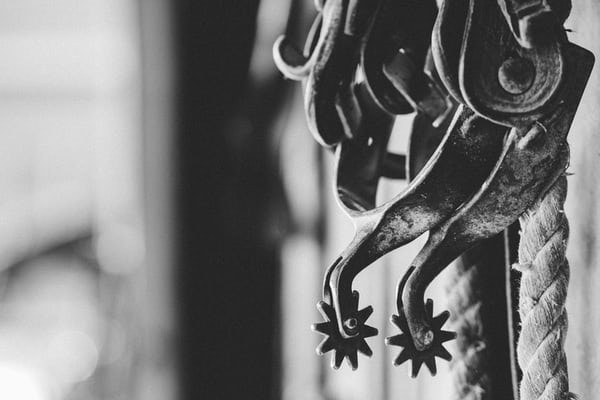
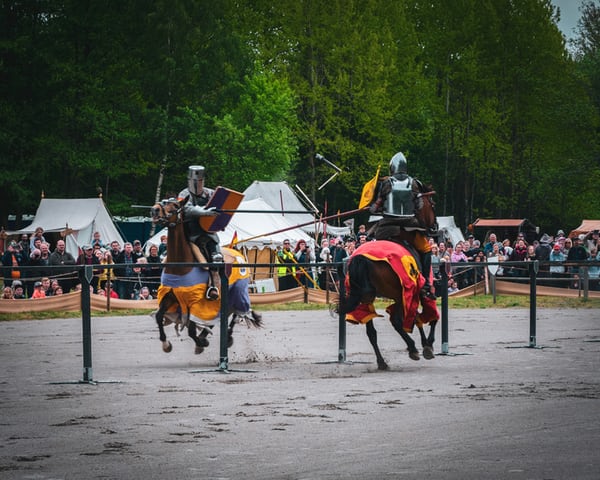
 RSS Feed
RSS Feed

